Posted on May 12th, 2011 by jxh
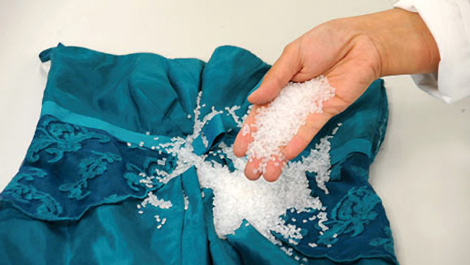
The average washing machine uses between 40 and 45 gallons of water per load of clothes. In addition, a large amount of energy is needed to heat the water. When you include the cost of laundry detergent on top of all that, you realize that washing clothes can be a pricey affair.
However, researchers at the British company Xeros Ltd have developed a new washing-machine technology that cleans clothes using a mere cup of water and just a drop of detergent.
Read More
Filed under: e-News, Environmental, Materials | 6 Comments »
Tags: Environmental, Green Technology, Materials
Posted on May 11th, 2011 by axb
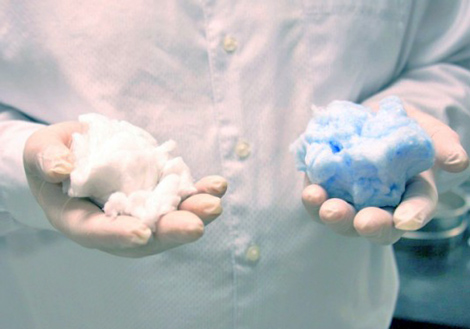
It’s not edible, but this new fiber could be the right medicine for persistent wounds.
A fluffy new material composed of glass fibers could be the latest in wound-healing technology, say researchers from Missouri University of Science and Technology. This cotton candy-like substance (pictured above) is composed of borate glass nanofibers and has been labeled DermaFuse.
Read More
Filed under: Biomedical, e-News, Materials | 1 Comment »
Tags: Biomedical, Materials, Nanotechnology
Posted on May 9th, 2011 by jxh
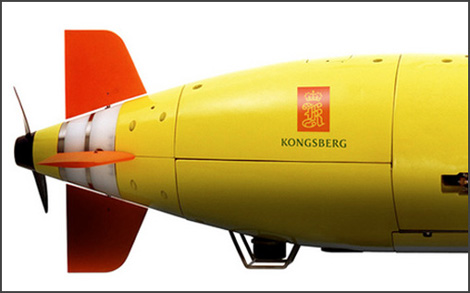 Two years ago, Air France Flight 447 was on its way back to Paris from Rio de Janeiro when it completely disappeared — without issuing a Mayday call or leaving even a trace on radar. After three search attempts, by boat, mini-sub, and sonar (in an effort to detect the ultrasonic signal emitted by the plane’s black boxes), the jetliner was finally discovered on April 3, 2011 with the help of an autonomous submarine called the Remus 6000.
Two years ago, Air France Flight 447 was on its way back to Paris from Rio de Janeiro when it completely disappeared — without issuing a Mayday call or leaving even a trace on radar. After three search attempts, by boat, mini-sub, and sonar (in an effort to detect the ultrasonic signal emitted by the plane’s black boxes), the jetliner was finally discovered on April 3, 2011 with the help of an autonomous submarine called the Remus 6000.
Read More
Filed under: e-News, Mechanical, Ocean | 12 Comments »
Tags: Mechanical, Ocean
Posted on May 6th, 2011 by jxh
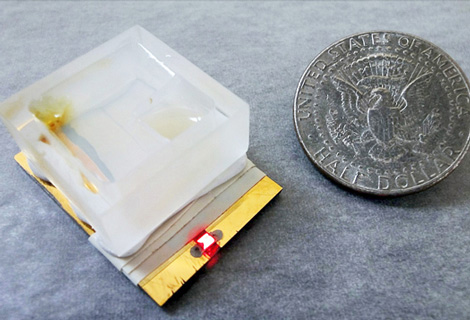
People who suffer from pancreatitis, a sudden inflammation of the pancreas, can experience severe stomach pain, nausea, fever, shock, and even death.
In order to detect pancreatitis quickly, biochemistry researchers at University of Texas at Austin have developed a sensor the size of a matchbox using only aluminum foil, gelatin, a 12-cent LED light, and a few other inexpensive materials.
Read More
Filed under: Biomedical, e-News | Comments Off on Jell-O Now Detects Organ Failure
Tags: Biomedical
Posted on May 4th, 2011 by jxh
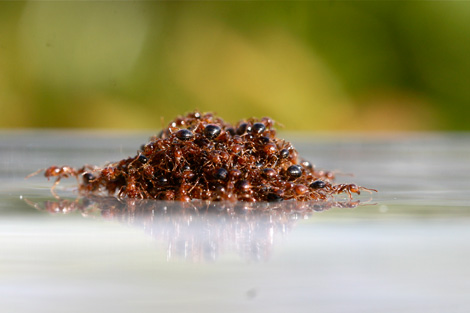
After closely studying the biomechanics of
cats, dogs, and
jellyfish, engineers are turning their attention to more bothersome critters:
fire ants.Engineers at the Georgia Institute of Technology examined the notoriously feisty ants more closely and discovered that the hairy surface of their rough skin makes it difficult for water to penetrate, much as duck feathers repel water because of their tiny bumps. Their work could lead to the development of new and better waterproof materials.
Read More
Filed under: e-News, Materials | 1 Comment »
Tags: Biomimicry, Materials, Robotics











 Two years ago,
Two years ago, 
